This attraction in Rome, St. Peter in Chains (San Pietro in Vincoli) is only a short walk from Colosseum but often overlooked by visitors to the city.
I, myself, am guilty as I first heard about St. Peter in Chains from the book “The Secrets of Rome” which I got as a gift last Christmas. When I read the following passage in the book that “the twenty magnificent columns….are the most beautiful to be seen in Rome and, I feel, the entire world”, I just had to see this for myself.
Last week, when I was in the Monti area, I took the opportunity to stop by this lesser known attraction in Rome and sorry that all the photos here are not the best quality as they were taken by me.
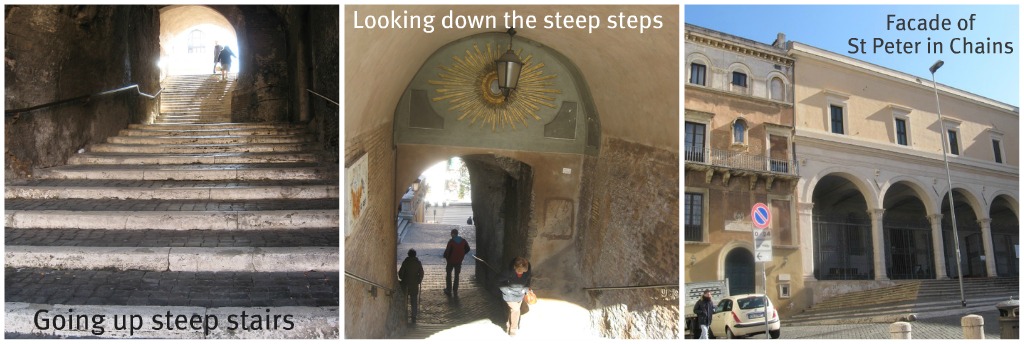
It’s a bit hidden and from Via Cavour, I took the stairs up and not sure at all if I was headed in the right direction. Fortunately, when I got to the top, I was happy to step into the Piazza with the familiar facade of St. Peter in Chains which I had seen while doing my research.
You can easily get there by taking the Metro B Line (Cavour Stop) or another option, as shown in orange on the map below, is after a visit to the Colosseum, you can walk this route and won’t have to deal with stairs.
Attraction in Rome: Moses by Michelangelo at St. Peter in Chains
While this church was rebuilt around 432-440 to hold the relics for the chains that bound St Peter, thus its name, it is often the real-life like sculpture of Moses by Michelangelo that visitors are here to see.
Before sharing more about the sculpture, there is an interesting legend about the chains worth mentioning. The Empress Euxodia, wife of Emperor Valentinian III, received the chains that were used to bind St. Peter in Jerusalam from her mother (note: this church is also known as the Basilica Eudoxiana).
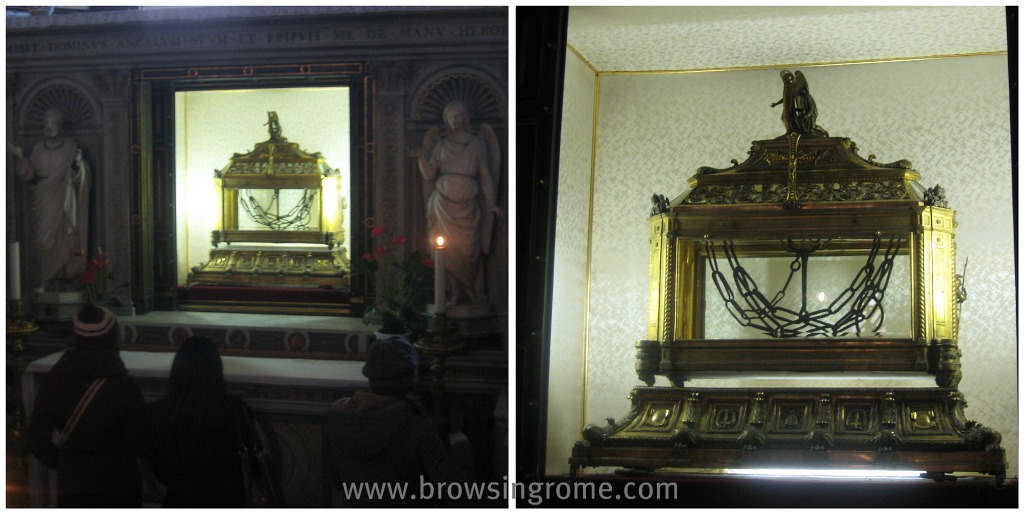
In turn, she presented these chains to the Pope at that time, Pope Leo I, who when comparing them with the chains that bound St. Peter in the Roman Mamertine prison, they miraculously joined together.
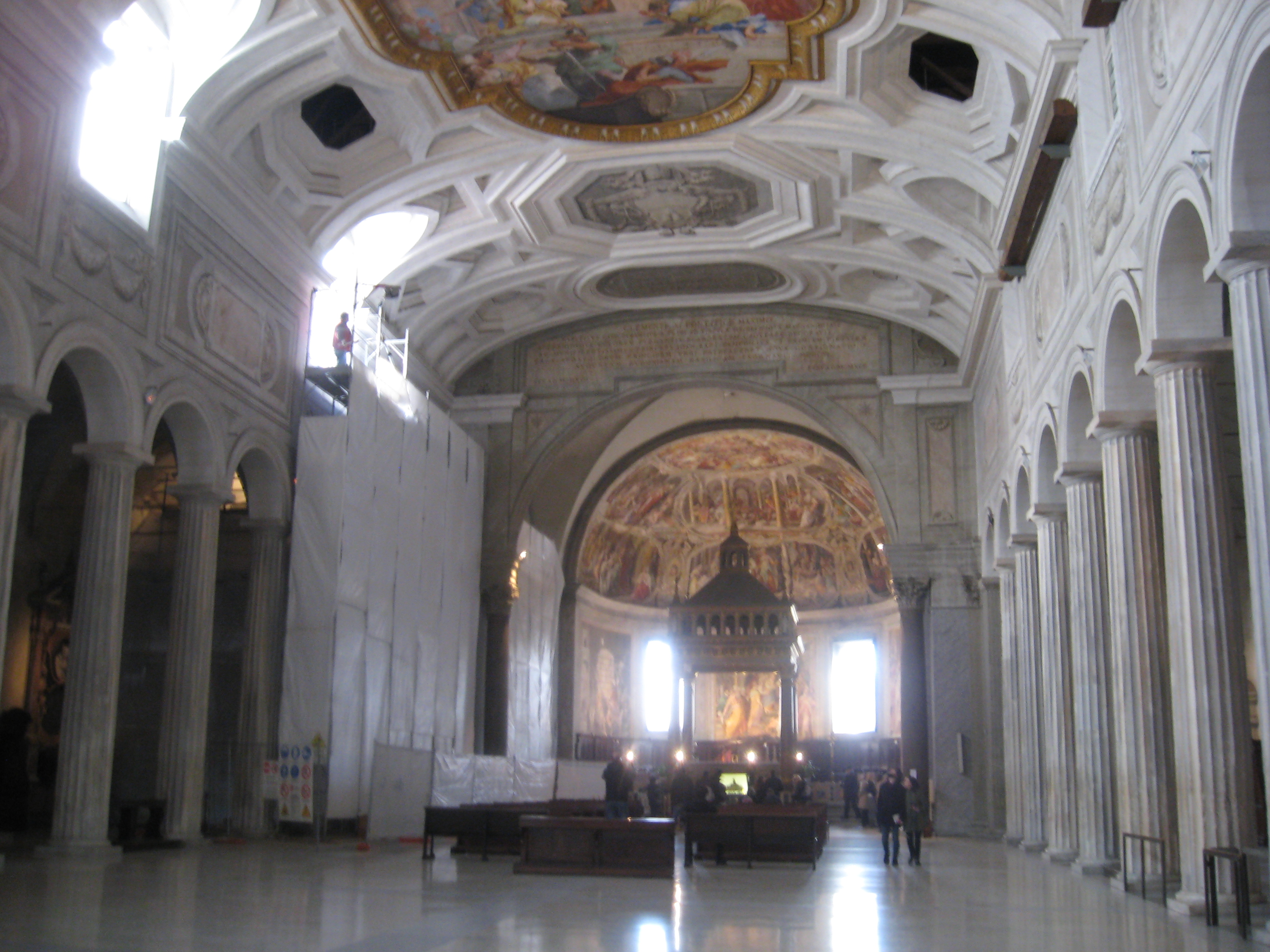
When you enter this church, there is a lot to take in with the twenty columns as described earlier together with the central ceiling fresco of “The Miracle of Chains” by G.B Parodi (1706) , the high altar and baldachin. Even with the renovation work going on, the view was astounding.
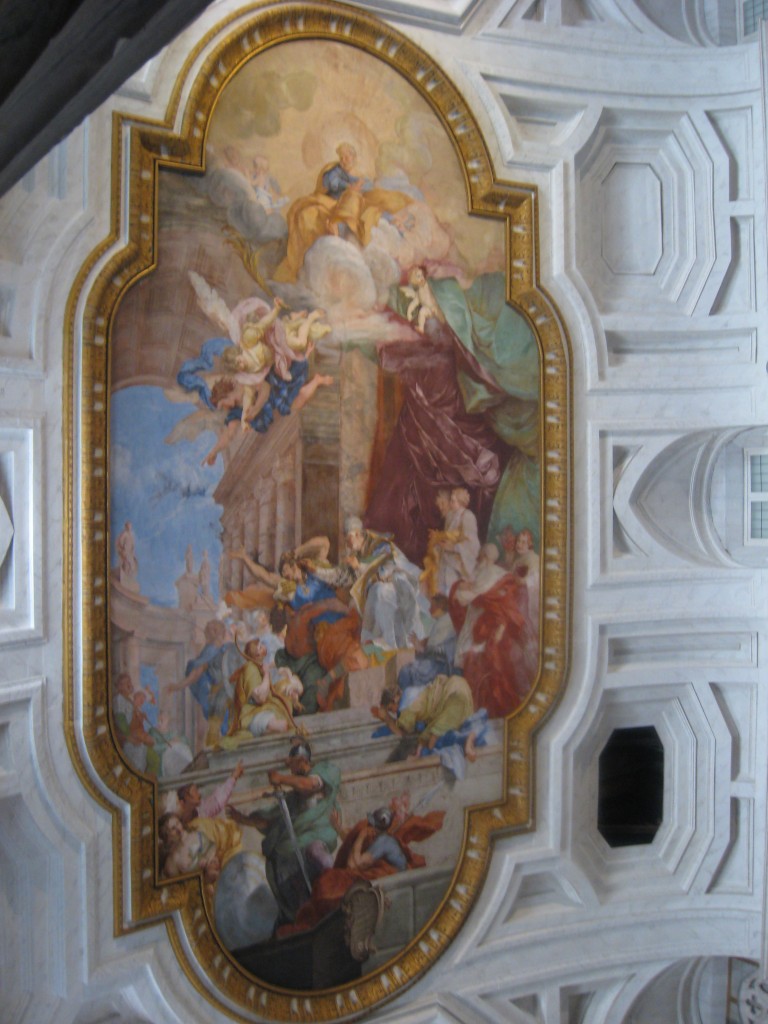
The ceiling fresco "The Miracle of Chains"
From the entrance, the Mausoleum of Pope Julius II, of which the sculpture of Moses is the center piece, is not visible. As you walk towards the altar, you will see the monument on your right.
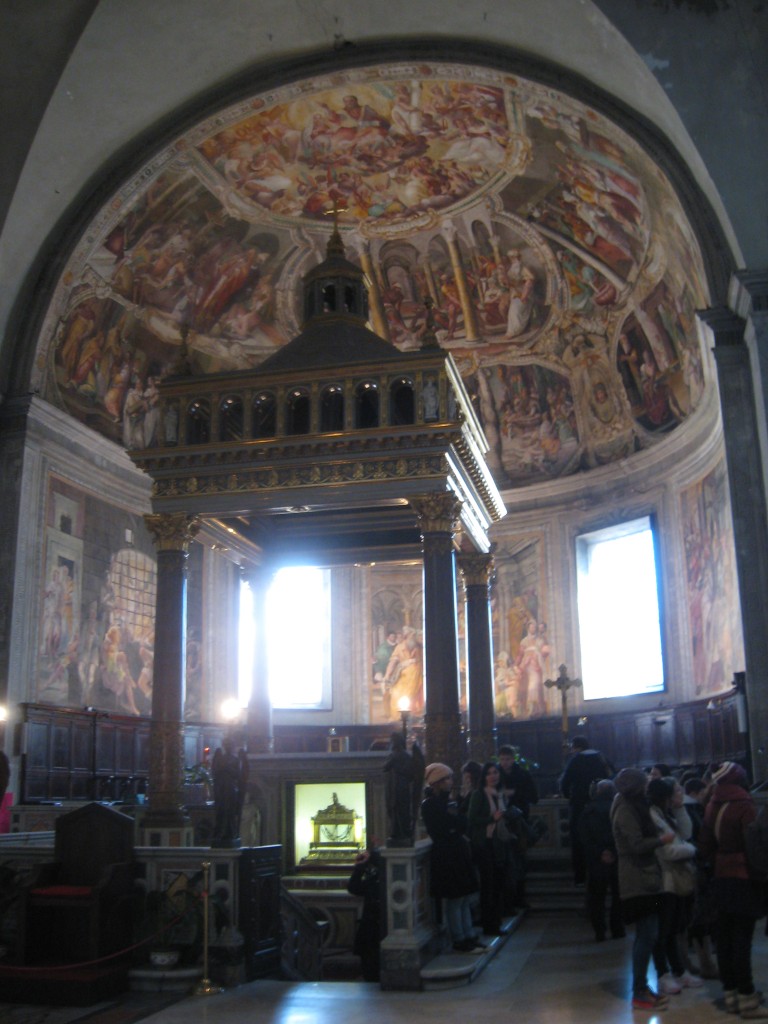
This mausoleum was originally meant to be a monument with over 40 statues. However, due to financing issues, other commitments such as the painting of the ceiling of the Sistine Chapel, disputes and finally, the death of Pope Julius II, it was never realized.
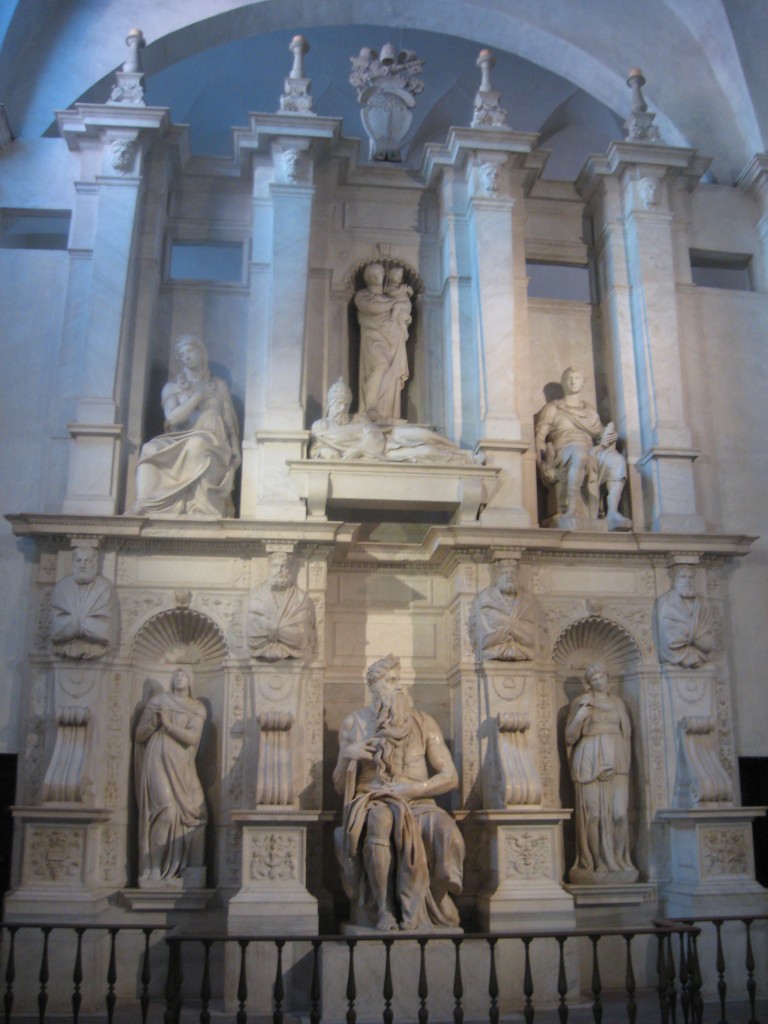
On each side there are two figures which Michelangelo also had a hand in, Rachel on the left (Contemplative Life) and Leah on the right (Active Life), the wives of Jacob.
While this work was commissioned in 1505, it was only completed in 1545 and considered by Michelangelo to be a”tragedy”. This sculpture was carved from a single 25-ton block of marble and clearly done by a genius as it is so detailed and the proportions are so exact that it seems real.
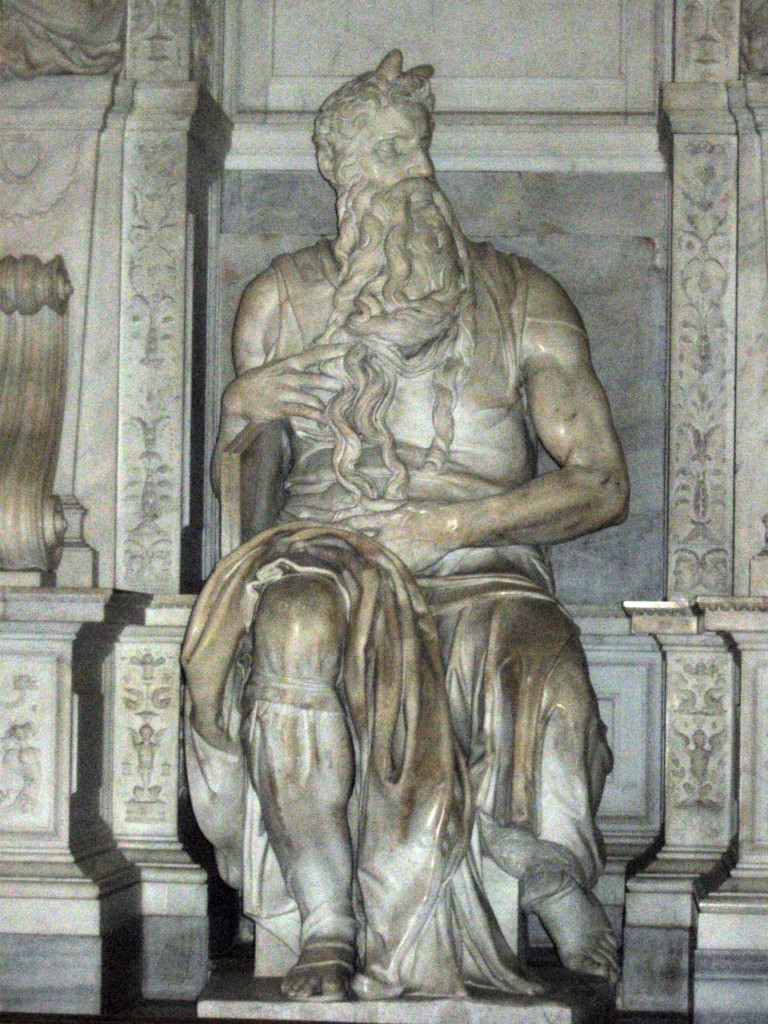
To give you a few more details about this sculpture, it depicts when Moses had just descended from Mt. Sinai with the tablets held in his right arm. I was curious about the horns on his head and this was mentioned by the audio video guide at the entrance of the church (it costs 2 euros). The explanation is that when Moses came down from Mt. Sinai after the conversation he had with God, he was radiating.
However, due to the mistranslation of the Hebrew word which can mean “ray of light” or “horn”, Michelangelo depicted the latter. Also, from an artistic point of view, it’s easier to depict horns rather than a ray of light. Genius!
While I didn’t have time to visit the cloister which is in the nearby University of La Sapienza, Faculty of Engineering, I hope to do so next time. There is more to see here than you can imagine so allocate at least 45 minutes to enjoy this attraction in Rome.
Address: Piazza di San Pietro in Vincoli 4A
It’s understandable that you would want to cover the major attractions especially if it is your first visit but if you have time, add this attraction in Rome to your list of places to see.
 BrowsingRome Blogging about my experiences and sharing my thoughts about Rome, Italy and beyond
BrowsingRome Blogging about my experiences and sharing my thoughts about Rome, Italy and beyond
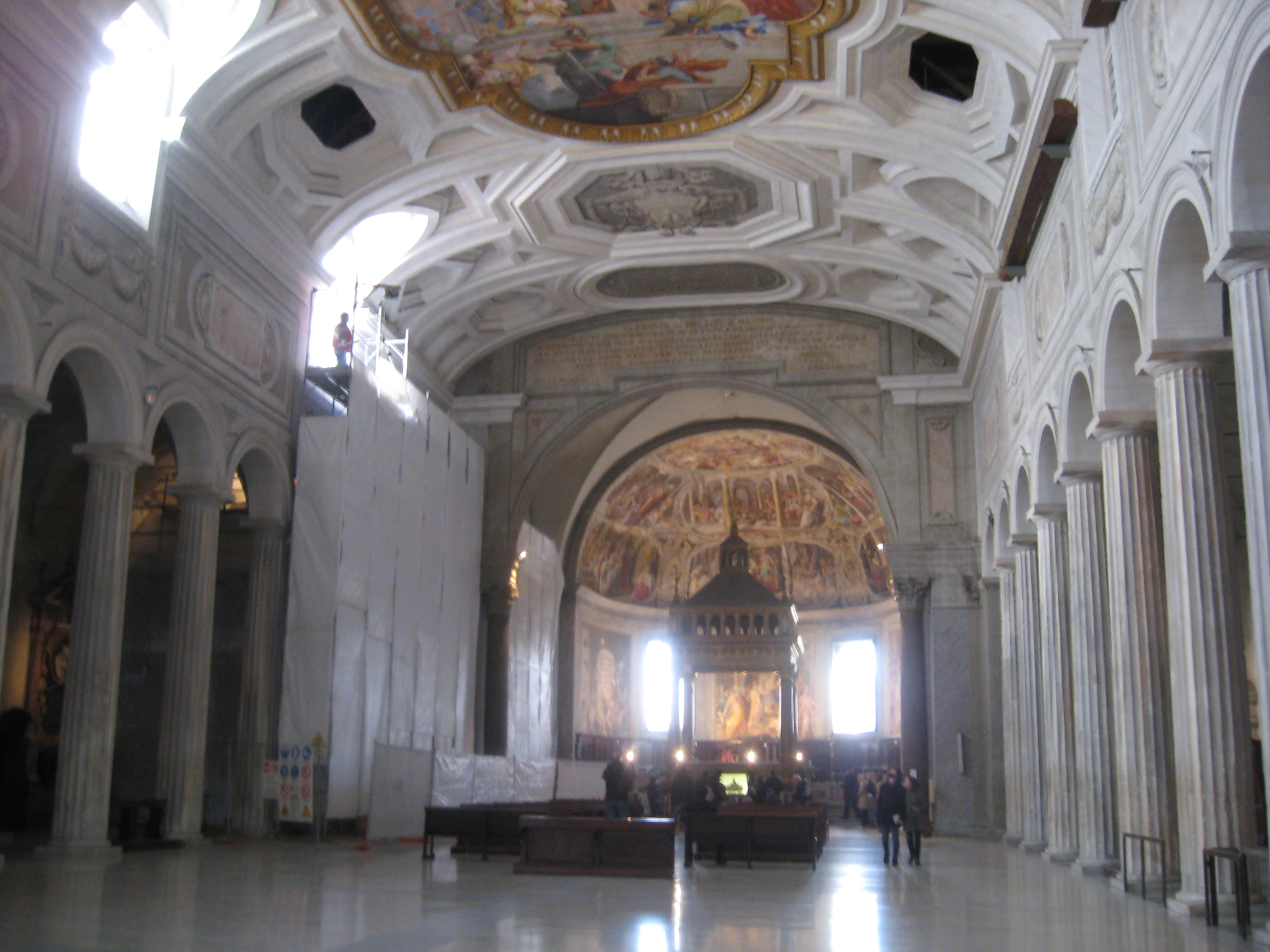
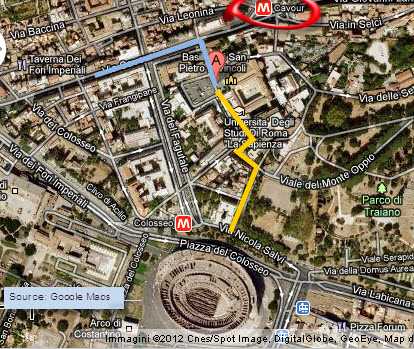
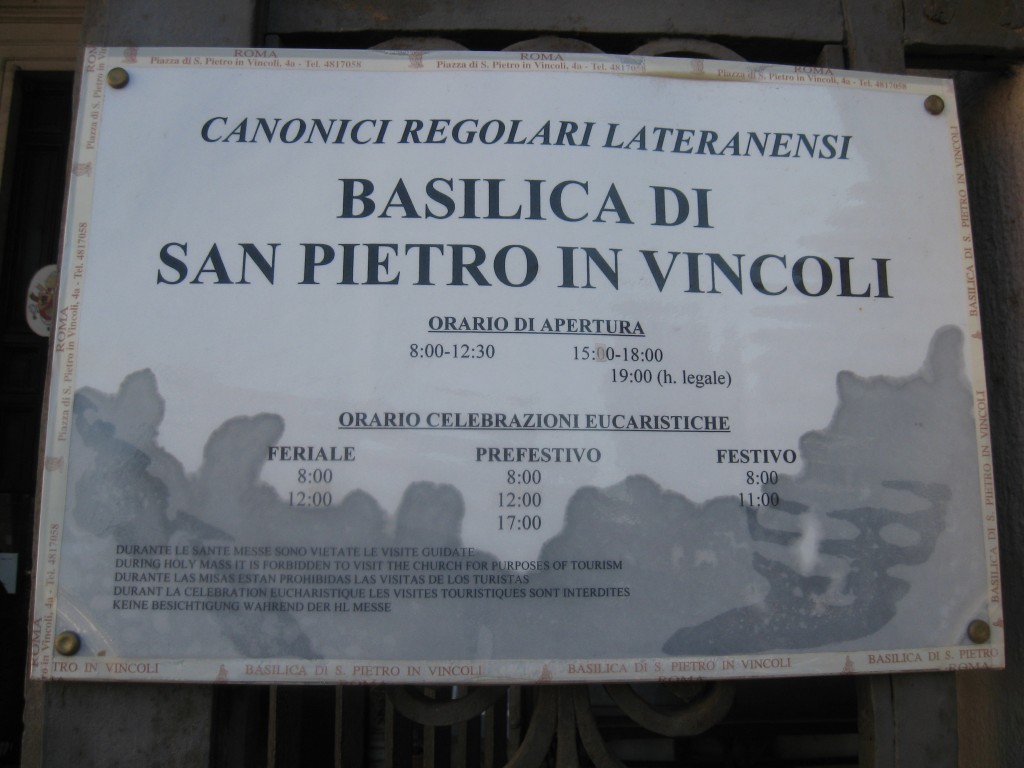
I love the pictures! The more I am at your site, the more I feel I need to visit Europe!
Hi Hajra, it’s warmer now and Spring is definitely the best time to visit! 🙂
Diana, I love your posts! Specially since I am coming to Rome very soon and you are a wonderful source for so many valuable tips.
Hi Barbara, glad you find them valuable!! Hope you will check out the lesser known attractions as they are as interesting. If you need any help or have questions, just drop me a note 🙂